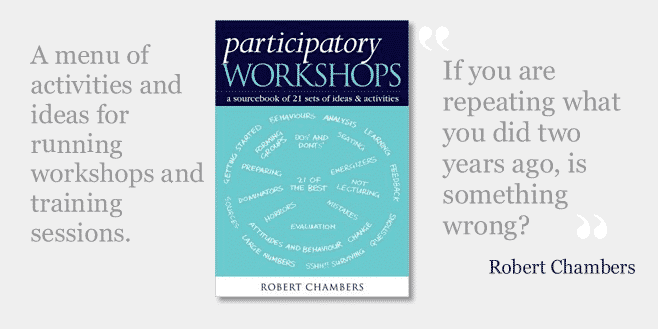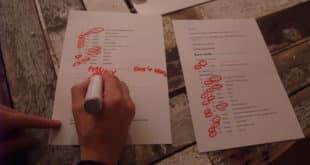Review Overview
Interesting content - 8
Easy to read - 10
Usefulness - 9
9
Full of ideas and activities that anyone organising workshops or training sessions can use.
As a follow-up to our previous book review of the Facilitator’s Guide to Participatory Decision-Making, I decided to review a facilitation book that was written specifically for an international development audience. Participatory Workshops: A Sourcebook of 21 Sets of Ideas & Activities, by Robert Chambers, is a collection of workshop activities collected over 10 years.
According to the author, the book is “for all who try to help others learn and change”. That includes facilitators, trainers and teachers, as well as anyone organising workshops, training and courses. While the Facilitator’s Guide to Participatory Decision-Making focusses on workshops where a group of people need to make decisions, this book applies to any type of workshop or training session.
This isn’t a book about how to be a good facilitator. It’s an “à la carte” menu of activities that help make learning “quicker, deeper, more enduring and more fun”. The reader can flick through the book reading instructions for activities such as the Bicycle Chain for doing introductions, Elephant, Giraffe Toaster an an alternative to the standard energizer game, Self-Organizing Systems On The Edge of Chaos (SOSETEC) for forming groups, and the Mood Meter for quick evaluations.
The description for each activity is brief – usually only a paragraph or two. It would have been nice to have more diagrams showing how the activities work, although I can see how it might have been difficult to fit them all into the book. There are 21 ideas and activities around 21 different themes, giving a total of 441 nuggets of inspiration. Chambers has used most of the activities himself, so they come tried and tested. The majority are suitable for low literacy groups, and he stays away from anything that could be sensitive in some cultures. There are also tips on how to arrange chairs and tables for maximum participation, and how to deal with dominant personalities such as PAINs (Pompous Arrogant Insensitive Notables).
I would like to have seen more fully formed games in the book, in addition to ideas and activities. As Jennifer Lentfer commented on WhyDev, games can be more engaging and fun than regular workshop activities. They also take more time to create, and they are usually very topic specific, which is perhaps why there were fewer of them in this book.
My favourite section of the book is Part 3 – Messing Up. If you’ve ever had a complete workshop failure, rest assured that Chambers has has probably done something similar, if not worse. From losing slides to being culturally insensitive, cutting off participants and ruining the whiteboard, this chapter will make you feel better about all the times you’ve messed up. Overall this is a great book for anyone who runs workshops or training courses.




